A vacuum cleaner battery is a very important part of every portable cordless vacuum cleaner. Even if you have a vacuum cleaner with the best characteristics on paper, but your battery pack is failing quickly, you will not be satisfied with your cordless vacuum cleaner as a whole.
Batteries as replacement parts for vacuum cleaners. You can buy them from online stores or in shops specialized for electronic equipment or shops with vacuum cleaner spare parts. Before buying cordless vacuum batteries, there are several things you should know about them.
Can a Rechargeable Vacuum Cleaner Battery Die?
Yes, rechargeable batteries die, too.
Depending on their chemistry type, rechargeable batteries – even when treated properly – can withstand only a limited number of charging/discharging cycles. For example, deep cycle lead-acid batteries (these are NOT common car starting batteries) and nickel-cadmium batteries can endure a few hundred charging/discharging cycles.
Nickel metal hydride batteries can stand up to 500 cycles, while various lithium batteries ‘operate properly’ even after 1000 charging/discharging cycles. When the batteries are not treated properly, their life span shortens significantly and they simply die!
Note
Operate properly means that after some time all batteries lose their capacity, but this is within certain limits, according to various standards. The best tester is, You, consumer – if your vacuum is not performing as it did when you bought it due to failing battery pack, it is time to change the batteries.
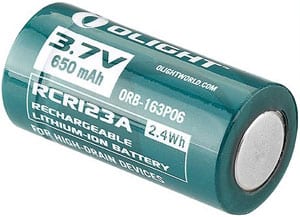
Do You Need to Replace a Rechargeable Battery in Your Vacuum Cleaner?
Check Out Our Guide on How to Replace Old Rechargeable Batteries In Handheld Cordless Vacuum Cleaners!
Always read manuals of your cordless vacuum cleaners. Which handheld vacuum cleaner or backpack vacuum cleaner (or any other type of battery-powered vacuum cleaner) you have, it determines which replacement battery you will have to purchase.
- Read and write down the exact replacement part ID number of your battery and of course which vacuum cleaner you have. This way you will certainly buy a proper battery pack.
Non-OEM replacement battery packs are generally cheaper than OEM replacement batteries, but they are not tested thoroughly as OEM’s battery packs and more often lack the performance of original batteries. Sometimes, new original battery packs cost almost like a brand new cordless vacuum cleaner.
- In these cases, buy non-OEM replacement battery packs, but read what other customers have to say regarding batteries you are about to buy.
- If the reviews of non-OEM batteries are bad, there is no point in buying such a battery. Buy an OEM vacuum cleaner battery even if it costs almost as much as a new cordless vacuum or simply buy a new cordless vacuum cleaner.
Vacuum Cleaners Batteries: Buying Guide
If you have a vacuum cleaner that has a battery pack consisting of ordinary consumers (most often AA or AAA) cell batteries (some cordless handheld or car vacuum cleaners), always replace all batteries (cheaper in the end) with new batteries having the exact battery chemistry like old ones.
When buying new batteries, try to buy good quality batteries – they last much longer and can endure more charging/discharging cycles and their self-discharge rate is much lower. The most common consumer primary and rechargeable batteries used in cordless vacuum cleaners are AA, AAA, 18650, CR2032, CR123A, LR44, and many other similar alkaline, silver oxide, NiCd, NiMH, and lithium batteries.
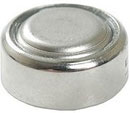
Do You Want to Learn More about Consumers’ Batteries?
Check Out Our Guide on LR44 / AG13 / L1154 Battery | Specifications, Equivalents, Replacements!
Such batteries are mostly used as energy sources to power the main motor which creates suction. Also, coin or button cell batteries like CR2032, LR44 and similar are found in high-end vacuum cleaners’ electronics. Although some of coin batteries are available as rechargeable batteries, I still haven’t found a rechargeable coin/button battery in any cordless or corded vacuum cleaner.

Lithium CR2032 3V battery is a primary coin cell battery, while the LIR2032 battery is a very similar 3.6V lithium rechargeable coin cell battery. Do you want to learn more?
Check Out Our Guide on CR2032 vs BR2032 vs LIR2032 Coin Cell Batteries: Side-by-Side Comparison & The Dos and Don’ts!
Anyway, when CR2032 or LR44 batteries fail, they are simply replaced by a new one – such batteries hold their charge for many years and many owners of high-end vacuums that have such batteries are not aware of it, until they have to change them.
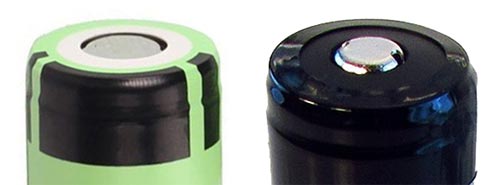
18650/19670 are rechargeable lithium-ion batteries commonly found in home appliances, high-end toys, laptops, and similar devices that require light and powerful source of electricity.
Check Out Our Guide on 18650/19670 Rechargeable Lithium 3.7V Battery – Specifications and Recommendations!
Although the memory effect of new battery types is much less obvious than in previous generations, it is highly recommended, from time to time. Usually, every couple of months (depending on usage frequency), to fully charge and then to fully discharge your vacuum cleaner and then to fully charge it again. This will refresh battery capacity and make batteries last longer.
If you have a vacuum cleaner with cell batteries (AA or AAA batteries), then a small extra battery charger with discharge function can come very handy.
Vacuum Cleaner Battery Chemistry
Most cordless vacuum cleaners use batteries of the following types:
Lead-Acid Batteries
Lead-acid batteries for vacuum cleaners are mostly used in older cordless vacuum cleaners or where weight is not important. They use the same chemistry as car batteries, but mostly have electrolytes in the form of a gel.
Gel cell batteries are electrolytes that can’t be spilled and battery normally operates in any position. They lose capacity rapidly if discharged using high currents, but they are pretty immune to memory effect. Very cheap.
There is a big difference between deep-cycle and starting/cranking lead-acid batteries. Lead-acid batteries used in vacuum cleaners and autonomous scrubbers should use deep-cycle, Valve Regulated Lead Acid (VRLA) batteries, either gel cell or Absorbed Glass Mat (AGM) Sealed Lead Acid (SLA) batteries. Such batteries are practically maintenance-free, vibration resistant and can operate in any position, without the danger of spilling the electrolyte.
Note that even such batteries should NOT be discharged more than 20-25% of their initial capacity, or they may be damaged. For more on this topic, check the Deep Cycle Marine Battery site.
NiCd – Nickel Cadmium Batteries
They are not very environment friendly. Their relative capacity is better than in lead-acid batteries, especially when using high discharge currents (more than 1C currents).
In fact, NiCd batteries are one of the best batteries for insanely high discharge currents – up to 30-50C. Although, these currents are rarely (if at all) used in vacuum cleaners. They are more expensive than lead-acid batteries and prone to memory effect.
NiMH – Nickel-Metal Hydride Batteries
These batteries are often found in cordless vacuum cleaners and in cordless appliances in general. Most modern appliances have low self-discharge NiMH batteries that can stay several months on the shelf and lose only few percents of their charge.
They have higher capacity than lead-acid or NiCd batteries, almost no memory effect (no memory effect according to manufacturers, but from time to time capacity ‘refresh’ comes handy) and they are much more environmentally friendly.
They have lower discharge currents than NiCd or lead-acid batteries (in terms of ‘C’ currents), but due to the higher capacity and other benefits, they have replaced almost entirely lead-acid and NiCd batteries in battery-powered vacuum cleaners.

Are you interested in getting a battery-powered vacuum cleaner for your home?
Check Out Our Dyson V6 vs V7 vs V8 vs V10 vs V11: Side-by-Side Comparison Review Guide!
Lithium-Ion Vacuum Batteries and Lithium-Ion Polymer Batteries
They are ‘high-end’ batteries in terms of capacity vs. mass, they have no memory effect, can be discharged with relatively high currents, and last long. They are one of the most expensive types of batteries used in cordless vacuum cleaners.
Other types of batteries are sometime used too, but rarely.
Charging and Discharging Currents
Charging and discharging currents are measured in amperes (A) or most often in ‘hour capacities’ – current is given as a number of capacities – current is given as hour-amperes multiplied by ability to supply needed current. For example (easier to understand):
- If the battery has 20 Ah capacity, that means that it is able to produce constant 1A current for 20 hours. The same battery will be able to produce 20A current, but for less than an hour.
- Or even 200A current for less than 6 (six) minutes – actual discharging time at high currents determines the battery’s capability to produce high currents.
- In cordless vacuum cleaners discharging times are often more than a half-hour, so extra high current batteries are not needed – NiMH batteries fit at these discharging currents nicely.

Interested in other cordless vacuum cleaners?
Check Out Our Dyson V6 vs V7 vs V8 vs V10 vs V11: Side-by-Side Comparison Review!
If the battery is discharged at 1C, that means that the 20Ah battery is discharged at a rate of 20A. Manufacturers often give tables showing how long can battery produce for example 1C, 2C, 5C currents. Good NiMH batteries can be discharged at a 1C rate for more than 50 minutes.
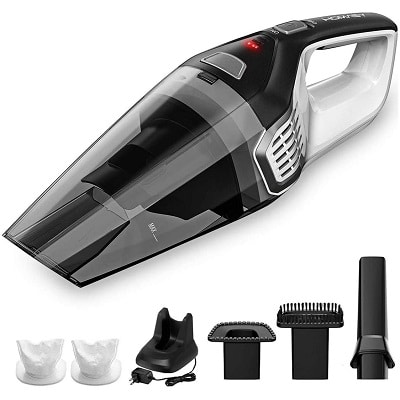
Memory Effect
If the battery is kept fully charged for months, it can ‘forget’ it’s capacity. Really. Memory effect is a problem for NiCd batteries in appliances that are constantly kept in docking stations and charged constantly. This can kill your batteries within a year if you don’t use your cordless vacuum cleaner often.
That is why you should regularly (once a month for NiCd batteries) fully discharge your vacuum cleaner and then charge it, again, fully.
Vacuum Cleaner Battery – Best Practices
Other types of batteries don’t have this problem, at least not as NiCd batteries – older NiMh batteries had these issues, but newer NiMH batteries with low self-discharge rate memory effects are almost gone. Again, it is good practice to fully discharge your cordless vacuum cleaner from time to time – at least, once a month, no matter what manufacturers say about their batteries.
Since batteries use different chemistry, you MUST use a battery charger that came with your vacuum cleaner or battery charger that is exclusively made for that battery chemistry – if you don’t do that expect fires or even battery explosions, so whatever you do, you do it on your own responsibility.
Is 18V Cordless Vacuum Cleaner Stronger Than 12V Cordless?
Makita XLC02R1B 18V Cordless Vacuum
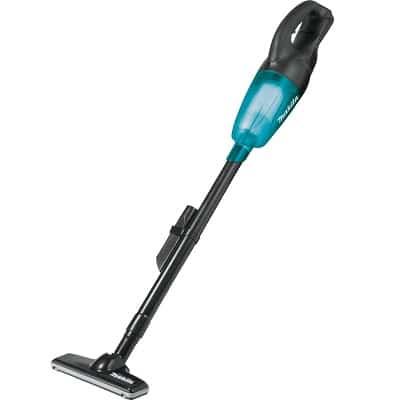
Probably! 🙂 The answer is not that simple…
The nominal voltage of lead-acid battery cell (today rarely used in cordless vacuums, but these are still present in cars, UPS devices, boats, etc) is 2V, NiCd and NiMh cell voltage is 1.2V and lithium battery cells have around 3.6V. Keep this ‘around’ in mind for lithium batteries, since they come in various versions and chemistry that vary slightly and their cell voltage can vary a little bit.
For example:
- 6V SLA (Sealed Lead Acid) battery has 3 cells,
- 12V SLA battery has 6 cells,
- 12V NiCd or NiMh battery has 10 cells,
- 14.4V NiCd or NiMh battery has 12 cells,
- 7.2V lithium battery has 2 cells,
- 14.4V lithium battery has 4 cells,
- 18V lithium battery has ONLY 5 cells.
We say ‘only’ since the power of cordless vacuum cleaners is (actually, it is the same for both cordless and corded vacuums):
Power (W) = current (A) x voltage (V)
So, for the same power, if the voltage is increased, the current can be decreased. Weaker current means lower power losses in cables, but also less stress to the battery.
What Else Should You Know About Vacuum Cleaners’ Batteries?
Newer batteries do cost more, especially lithium batteries, but they come with increased both voltage and capacity and with reduced weight. So, newer models come with motors optimized for higher voltages, draining the same or even stronger currents.
Therefore, if the newer cordless vacuum cleaner has increased voltage from 12V to 18V and capacity from 3.5Ah to 7Ah, with the doubled current than before, then:
- the power is increased 3 times, for example from 100W to 300W;
- the operating time is increased since newer battery with 7Ah capacity can be drained little bit longer with 2x stronger current than older 3.5Ah battery due to lower capacity loses when the battery is drained with stronger current, for example, if older vacuum-operated 15 minutes at full power, then the new model will probably operate at least 20 or even 25 minutes.
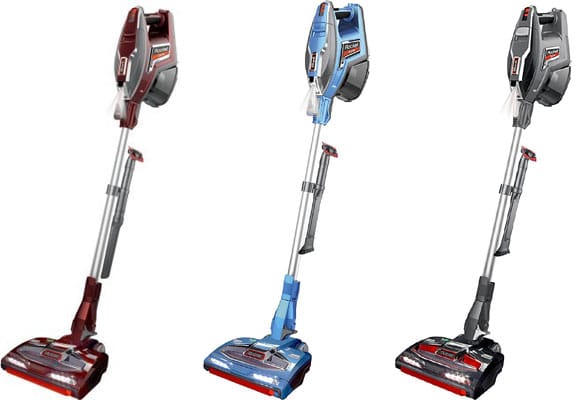
Not finding what you are looking for?
Check out our Shark Rocket HV301, HV302, HV305, HV321, and HV322 Ultralight Upright vacuum cleaners are a group of very similar Shark Rocket vacuum models!
Physics, Chemistry, Math … Who doesn’t love them?! 🙂
Anyway, as these examples clearly demonstrate, newer battery types are the way to go when performance is required – meaning lithium batteries.
For cheaper cordless vacuums, NiMh batteries are still a great power source that will still be around for years.
Vacuum Cleaners Batteries: FAQs
In our opinion, the best battery-powered vacuum cleaners are as follows:
In the Dyson series: Dyson V8 Absolute, Dyson Cyclone V10 Absolute, and Dyson V11 Absolute. For more information on cordless, battery-powered Dyson vacuums, check out our Dyson V6 vs V7 vs V8 vs V10 vs V11 side-by-side comparison review.
In the Shark series, we recommend Shark DuoClean Cordless and the Shark DuoClean Powered LiftAway. If you want to learn more, check out our Shark vacuum cleaners comparisons and reviews.
Dyson batteries in handheld models usually last around 4 years. If you notice that you need to keep your vacuum charged at all times, it means you should replace your vacuum’s battery.
If you want to invest in a cordless vacuum, our recommendation is to look into the Dyson V8 Animal Cordless Vacuum or one of the Shark cordless vacuum cleaners. Read our guide on the best commercial vacuum cleaners to make the best choice for your needs!
Read Our Latest Articles to Learn More about Vacuums and Cleaning Solutions!
- What is the Best Vacuum Cleaner?
- Handheld Vacuum Replacement Batteries
- 6 Unexpected Appliances That Use A CR 2032 Battery
- CR2032 vs BR2032 vs LIR2032 Coin Cell Batteries | Side-by-Side Comparison
- How Does A Vacuum Work? Ultimate Guide

With a degree in engineering, Kathryn Hansen loves to write about how things work. Having her own dilemmas on how to pick the best vacuum cleaner for her large family (with a handful of furry four-legged members as well), Kathryn decided to help others in the same situation. After all, vacuum cleaners are critical to a healthy lifestyle and people have a hard time choosing the best one for their needs.

we want a rechargeable cordless vacuum cleaner where we can replace the battery.
Can I use a 12v charger ( also mean for same brand vacuum cleaner ) to recharge a 14.4v lithium ion battery for a cordless vacuum cleaner?
Can I use a 12v charger ( mean for charging vacuum cleaner) to recharge a 14.4v lithium-ion battery for a cordless vacuum cleaner?